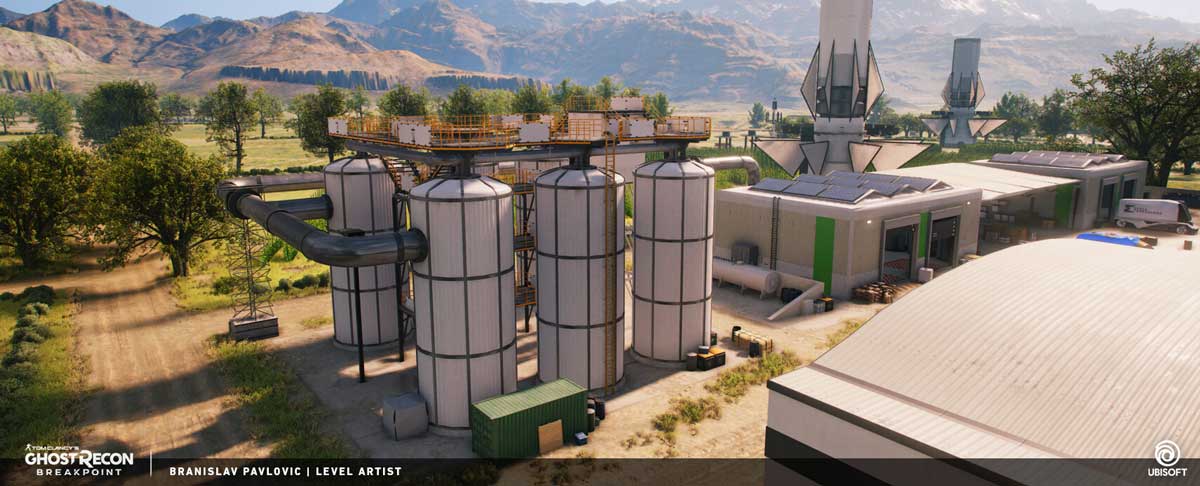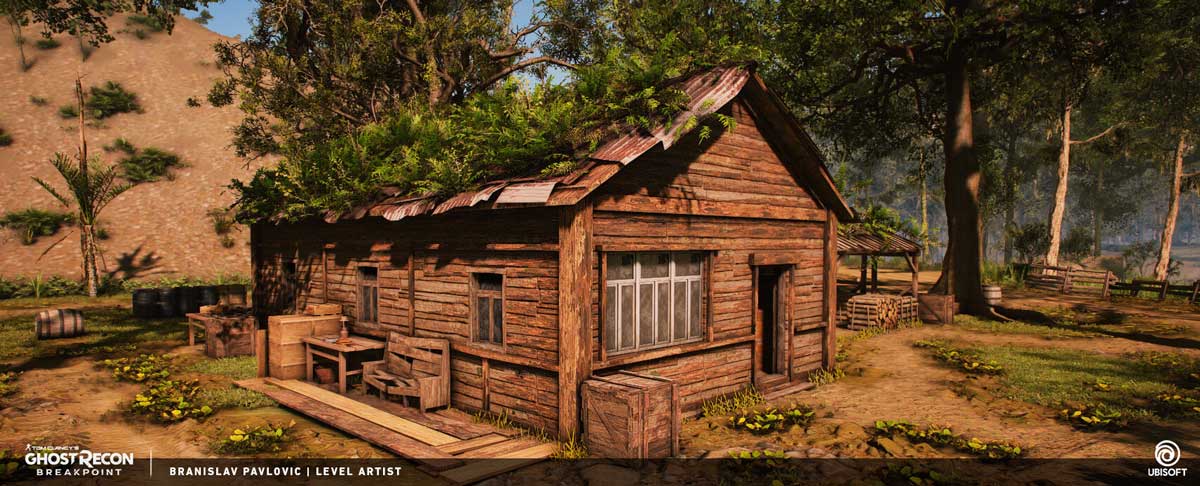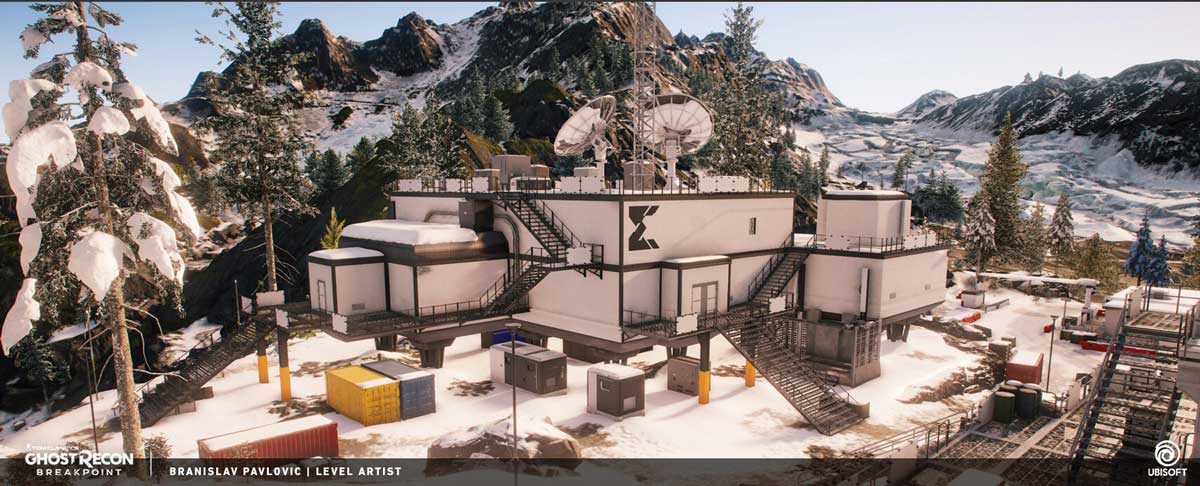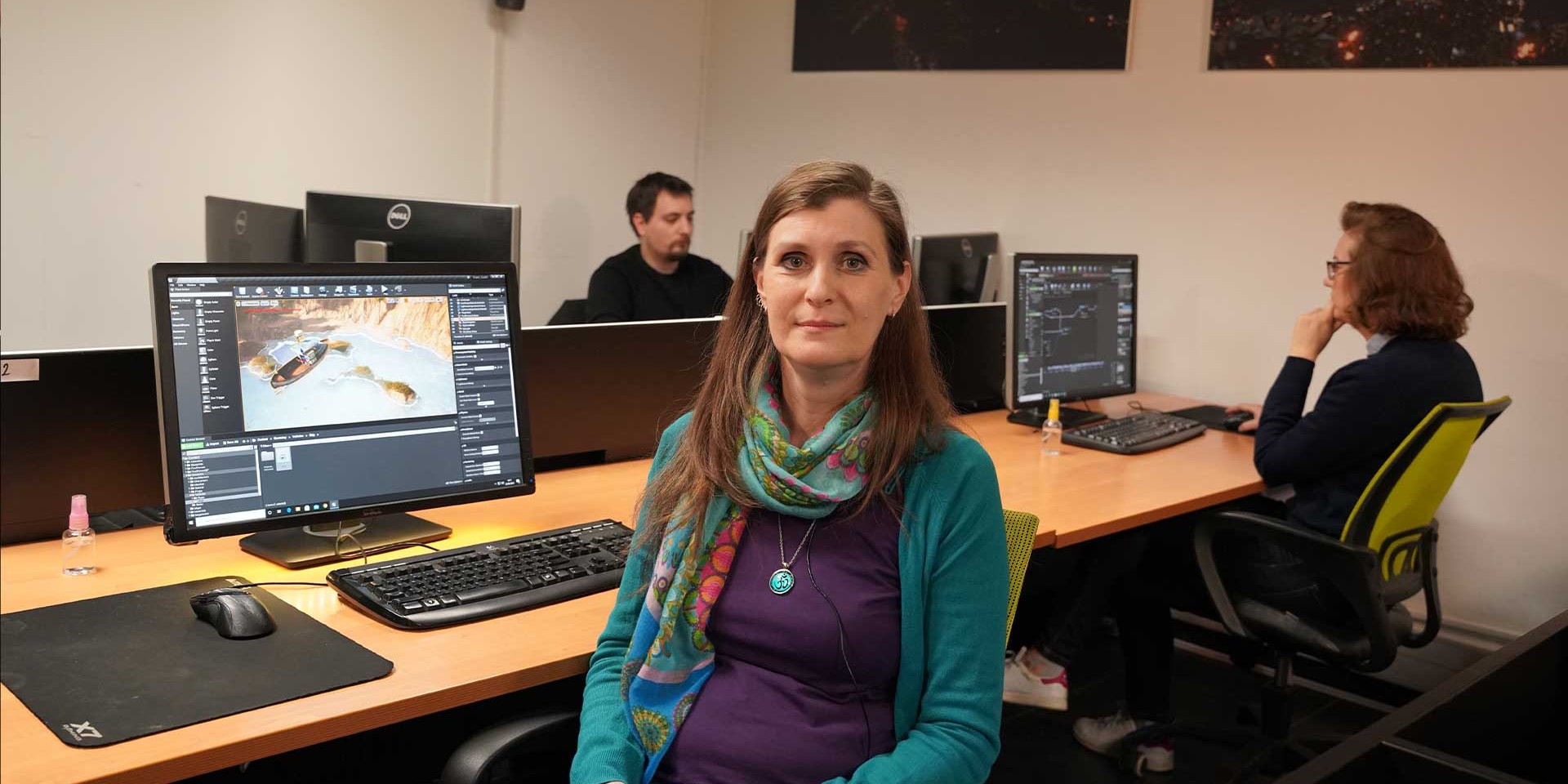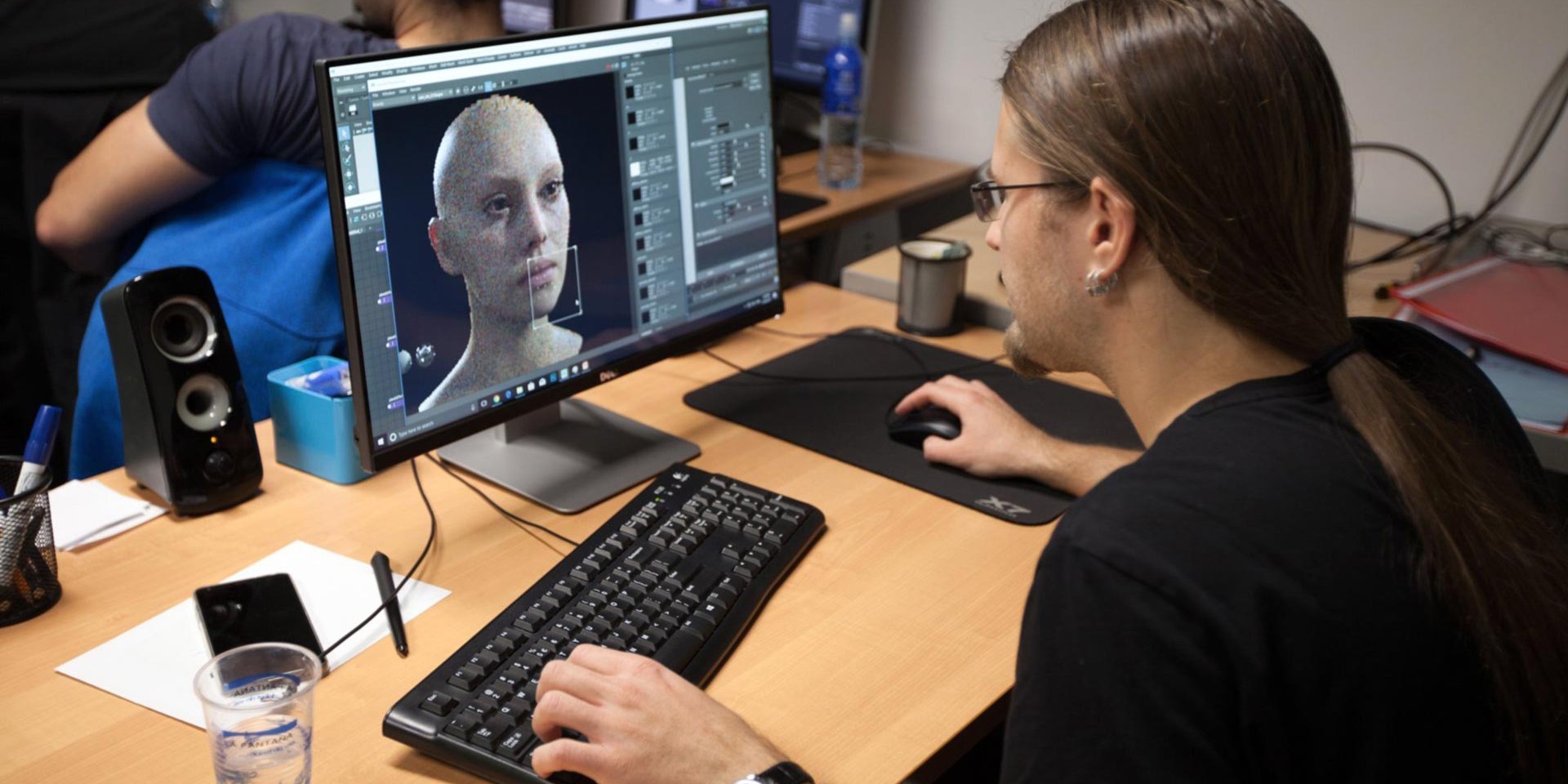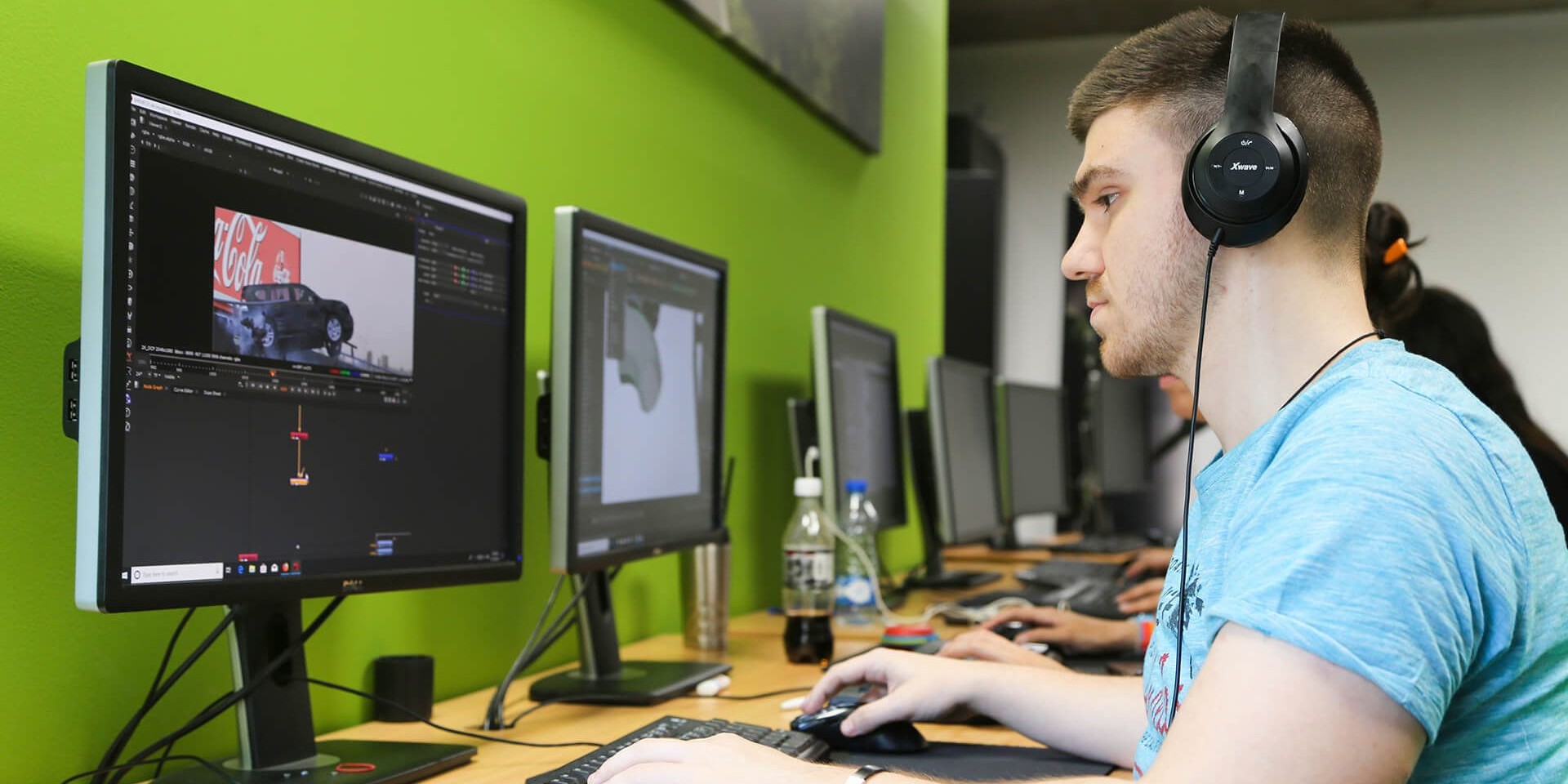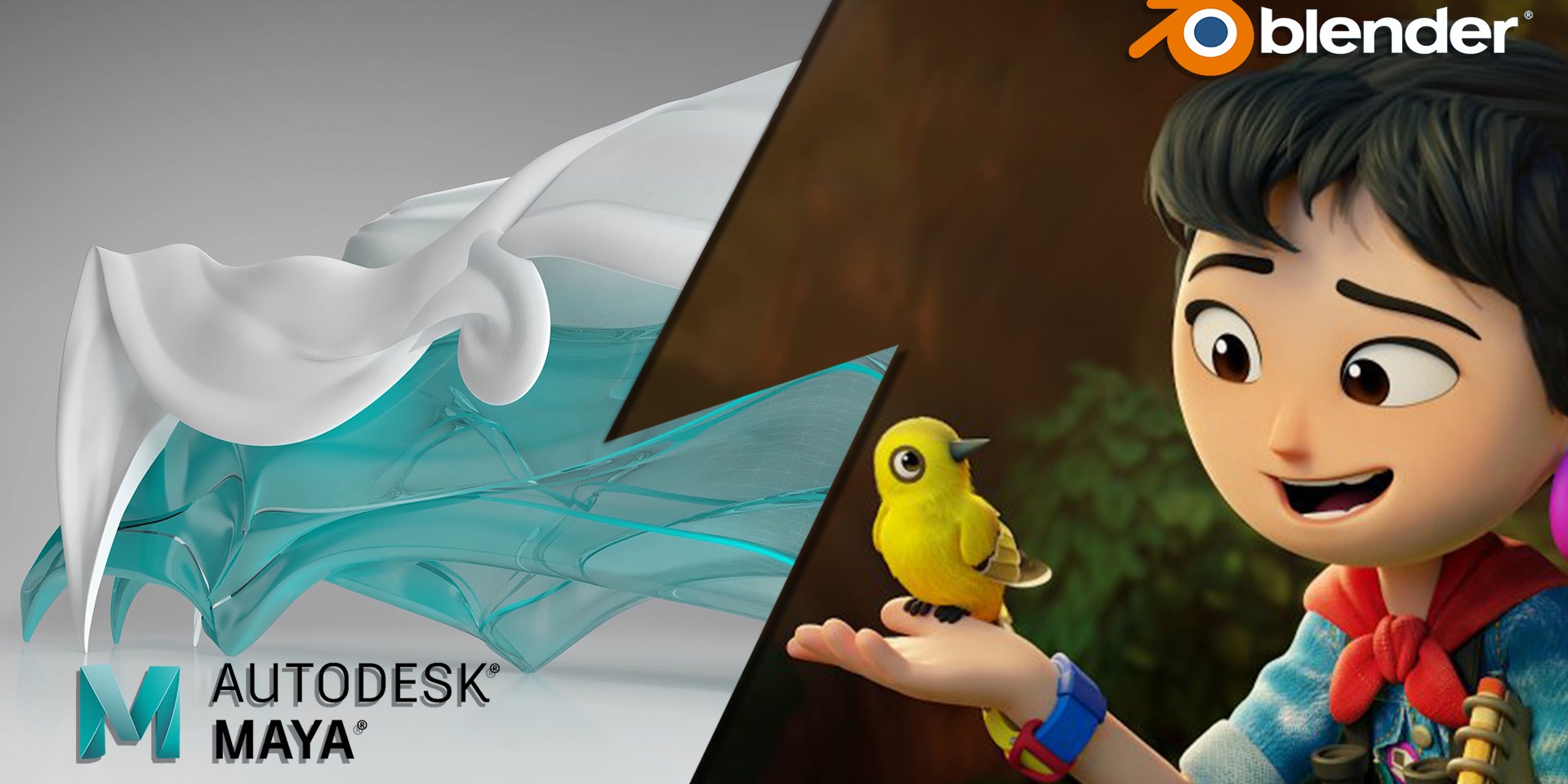Best software if you’re starting in VFX, Gaming or Motion Graphics industry
If you’re interested in VFX, Gaming or Motion Graphics but you don’t know what exactly is your primary interest or you find a lot of varying information regarding where to start, maybe the first question you need to ask yourself is – am I interested in 2D or 3D?
We recently spoke to our tutors Bogdan Amidzic (Digital Compositing, VFX in Houdini), Branislav Pavlovic (3D Essentials, Environment Art, Creating Props for Games) and Vladan Vasiljevic Djiri (After Effects, Motion Graphics 2D, Motion Graphics 3D) about the first steps in VFX, Gaming and Motion Graphics industry. We’ve selected their most important advice and tips for beginners in Computer Graphics.
Distinction between 3D and 2D in Visual Effects – VFX

When it comes to visual effects for film, 3D is everything you can observe from different angles. On the other hand, 2D graphics in film is actually reserved for image editing, which is quite different understanding of 2D if you compare it to traditional animation and what we know as 2D in Disney or Japanese Anime. When you work as a 2D artist in VFX, there is already an image or 3D render you need to edit in software such as Photoshop, After Effects or Nuke. 2D effects in VFX also cover texturing, as a process that’s between 2D and 3D.
If you’re interested in 3D graphics more, than it’s best to start with software such as Maya, Blender, 3DS Max or Cinema 4D.
If you’re attracted to 2D graphics more than 3D, then your first step should certainly be Photoshop, which is the base and, more often than not, a prerequisite for working in fields such as Compositing. However, if 3D is your thing, then you should probably start learning one of 3D programmes such as Maya, Blender, 3DS Max or Cinema 4D. They all offer an amazing range of learning opportunities. This way you’ll be able to try out many different things, from 3D modelling and texturing to rigging and animation. With time you’ll get a sense of what is most suitable to your interests. The best advice would be to start from the basics such as modelling and then gradually specialize in the field you’re most interested in. It’s important not to skip the basics because if you learn to work in Substance, for instance, and you don’t really know anything else, you will hardly fit into any studio pipeline.
“It’s important not to skip the basics because if you learn to work in Substance, for instance, and you don’t really know anything else, you will hardly fit into any studio pipeline.” says Bogdan Amidzic, lecturer at courses VFX in Houdini and Digital Compositing.
Gaming
Branislav Pavlovic, lecturer at gaming courses 3D Essentials, Environment Art and Creating Props for Games, emphasizes the importance of 2D graphics when it comes to games and 2.5D graphics in mobile games. However, choosing between 2D and 3D graphics comes down to individual needs and goals. If you want to work on AAA titles one day, then you should embark on 3D journey as soon as possible. On the other hand, if you see yourself as a Concept artist, deciding to work in 2D graphics is a good choice.
Motion design
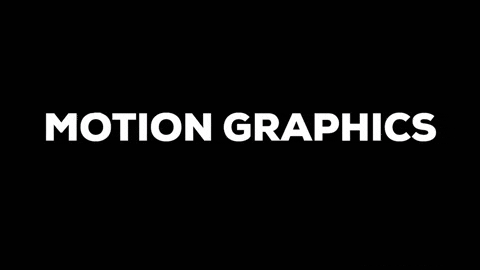
“Anyone who’s a beginner should follow their own interests, experiment and do the research” says Motion Graphics lecturer Vladan Djiri Vasiljevic
This exciting field often combines 2D and 3D, so it’s recommendable that you don’t limit yourself too much in the beginning and explore both 2D and 3D equally. Apart from using it in Motion Graphics, 3D can offer a lot of opportunities outside of this field if you ever decide to specialize in another direction. So it keeps your options open. Starting with Motion Graphics courses in Crater Training Center, you’ll grasp a variety of tools and get the big picture from start.
If you’re interested in a career path in Visual Effects, Gaming or Motion Graphics, you can choose a Professional or Starter Course Package.
Shift to Computer Graphics sesiju o ulasku u VFX, Motion Graphics i Gaming industriju možete pogledati ovde.
Author:
Tamara Milovanovic

